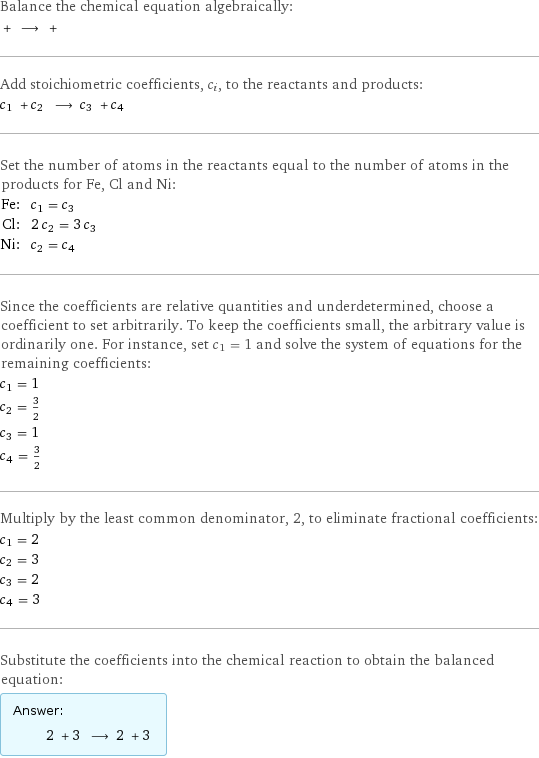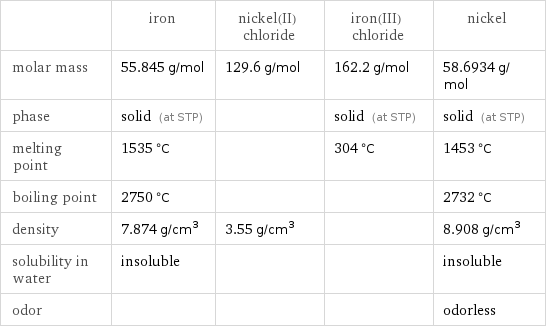Input interpretation

iron + nickel(II) chloride ⟶ iron(III) chloride + nickel
Balanced equation

Balance the chemical equation algebraically: + ⟶ + Add stoichiometric coefficients, c_i, to the reactants and products: c_1 + c_2 ⟶ c_3 + c_4 Set the number of atoms in the reactants equal to the number of atoms in the products for Fe, Cl and Ni: Fe: | c_1 = c_3 Cl: | 2 c_2 = 3 c_3 Ni: | c_2 = c_4 Since the coefficients are relative quantities and underdetermined, choose a coefficient to set arbitrarily. To keep the coefficients small, the arbitrary value is ordinarily one. For instance, set c_1 = 1 and solve the system of equations for the remaining coefficients: c_1 = 1 c_2 = 3/2 c_3 = 1 c_4 = 3/2 Multiply by the least common denominator, 2, to eliminate fractional coefficients: c_1 = 2 c_2 = 3 c_3 = 2 c_4 = 3 Substitute the coefficients into the chemical reaction to obtain the balanced equation: Answer: | | 2 + 3 ⟶ 2 + 3
Structures

+ ⟶ +
Names

iron + nickel(II) chloride ⟶ iron(III) chloride + nickel
Chemical names and formulas

| iron | nickel(II) chloride | iron(III) chloride | nickel Hill formula | Fe | Cl_2Ni | Cl_3Fe | Ni name | iron | nickel(II) chloride | iron(III) chloride | nickel IUPAC name | iron | dichloronickel | trichloroiron | nickel
Substance properties

| iron | nickel(II) chloride | iron(III) chloride | nickel molar mass | 55.845 g/mol | 129.6 g/mol | 162.2 g/mol | 58.6934 g/mol phase | solid (at STP) | | solid (at STP) | solid (at STP) melting point | 1535 °C | | 304 °C | 1453 °C boiling point | 2750 °C | | | 2732 °C density | 7.874 g/cm^3 | 3.55 g/cm^3 | | 8.908 g/cm^3 solubility in water | insoluble | | | insoluble odor | | | | odorless
Units
